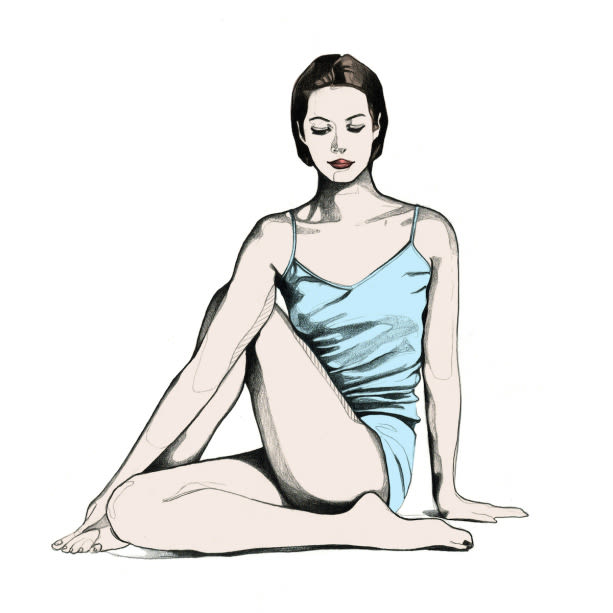“It wasn’t even a workout,” my sister lamented over the phone after walking out of an hour-long 'Restorative Yoga' class wherein she was directed into a grand total of four poses. “There were pillows and blankets.”
Her confusion was understandable. A former child gymnast and Division 1 lacrosse player, my sister likes her sense of accomplishment served with a side of grimace. And yoga, in all its iterations, connotes supporting your inverted, spandex-wrapped, pretzel-twisted body with Lamaze breathing, and then pushing further. But the 'restorative' type isn't even about competing with yourself. This practice takes the basic components of the Hindu discipline—breath control, meditation, and simple postures—and stops right there. You will not hear “lean back, go back, way back,” in this room. And just like sex in the Netherlands, it’s better if you keep your socks on. In fact, don’t even bother removing your makeup or your sweater. You’re going to spend an entire hour simply chilling.
I like to think of restorative yoga as adult nap time, and, similar to the bouncer at the old Beatrice Inn—the only way you're going to get through is if you stop trying so hard. Which is refreshing, honestly, because when you're living in NYC, even the walk to your office can feel like a full-contact sport. The hardest physical work required in restorative yoga is artfully folding blankets as body supports. As Alie Flynt, a yoga instructor/therapist at NYC's YogaWorks (my restorative studio of choice) explained, “We use props to support your body to achieve physical, mental, and emotional relaxation. When your body is that supported, when you don't have to exert effort to just be, you will release tension in places you didn't even realize you were holding it, like your face, jaw, and shoulders. The longer you hold the poses, the more you will release.”
At YogaWorks, I might be asked to lie in whatever the Sanskrit term for “fetal position' is, and then switch to the other side. I might be directed to prop my feet up on a bolster, and lie face down with my arms out to my sides and hips supported off the floor by the aforementioned blankets. If I get cold, I can raise my hand to signal that I'd like to be swaddled like a newborn baby. But this isn't to say that restorative is easy; it's just a very different kind of challenge. You have to be still and quiet— internally quiet.
I go to restorative yoga for the body and mind awareness. Just a simple reminder to “feel the space between the back of your head and your jaw' relaxes me to the point of re-assigning stress levels. Deadlines feel manageable, not crippling, petty grudges seem just that, forgiveness (for myself and others) comes pouring out, and I begin to actually hear my thoughts, rather than being their obedient prisoner. Restorative soothes me, opens up more space inside me, reminds me that every person is large enough inside to contain an entire life's worth of experiences/thoughts/memories/emotions, and thus makes me feel more capable of being in control, just by lying down.
Alie explained that, rather than tapping into the sympathetic nervous system (the survival skills your body utilizes when reacting to stress), restorative calls forth your parasympathetic nervous system to “bring down blood pressure, heart rate, and allow the body to regulate itself.” Which, in turn, leads to alleviation of “physical illness, anxiety, stress, depression, physical tension.” among other things, and supplies a healing long meditation. If, among the bolsters and blankets, I can't unite my body and mind, I can at least get them to start rhyming. It's really the one place I can go to just be a human be-ing, not a human try-so-hard. Which is more self-respect than I've ever garnered from sweat.
If you can't make it to a class, Alie's favorite at-home restorative pose is Viparita Karani (a.k.a. legs-up-the-wall pose): “On your bed or on the floor, begin by lying on your back, close to a wall, facing that wall. If you're on the floor, fold a blanket or a towel under your hips. Your head, shoulders, and back will remain off of the blanket. Then swing your legs up the wall, keeping your hips in place. Depending on how tight your hips and hamstrings are, your hips can be as far as two feet from the wall. You can also bend your knees to find comfort. Let your arms rest peacefully at your side and stay in place for 10 to 15 minutes. This is recommended to treat insomnia and anxiety, relieve cramped legs and feet, and gently stretch the back while calming the mind.”
—Mackenzie Wagoner
Illustration by Lucy Han.

